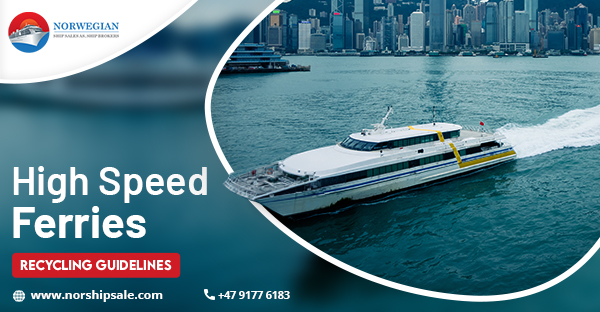Have your ferries reached the advanced stage of their lifecycle? Then, there is no point in putting up the high speed ferries sale. With that being said, we must remind that you have to be very careful when it comes to recycling your vessels. Remember, even in their last working lives, ships or vessels can still have immense value. If you recycle them properly, you can reuse immense quantities of steel and other components parts in various applications. However, recycling a sea vessel is a daunting task, to say the least. Often, the ships to be recycled can contain harmful substances such as hydrocarbons, heavy metals and asbestos, which have to be carefully disposed of. So, here are the guidelines you must know before recycling your ferry.
The Hong Kong Convention –
Supervised by the International Maritime Organisation, The Hong Kong Convention was signed by 63 countries in 2009 to ensure safe and sustainable recycling of ships. Under the convention, ships that are to be recycled must have the inventory of hazardous materials (IHM) to comply with the ultimate objective of safe ship recycling. In other words, the inventory has to contain actual information on hazardous materials specific to that ship. Based on this information, the ship recycling facilities are going to plan proper abandonment or management of such hazardous materials.
Ship Recycling Plan –
To ensure hundred percent accountability and commitment to the objective, ship recycling yards have to present a ‘Ship Recycling Plan’ clearly stating the way how the ship is going to be dismantled and recycled. Several guidelines have been developed over time to guide the States in complying with the technical standards of ship recycling. So, you see, when you are purchasing high speed ferries for sale, you will also have to make concrete efforts to ensure their proper and green disposal. This is important to save human lives, reduce solid waste pollution, and conserve the maritime environment.
Green Ship Recycling –
With the harmful practice of offloading ships into the ocean coming under scrutiny, ship owners are now turning towards green ship recycling today. In this process, the sustainable recycling centres use dry-dock facilities to collect and dispose the toxic wastes properly and without letting them flow out to the water bodies. That apart, green recycling also involves methodical destruction of vessels so that their useful components can be preserved and used with better care in future applications. Entirely machine-based, green recycling practices prevent manual handling of toxic components ship components thereby avoiding health as well as environmental hazards.
Conclusion –
Important for the environment and to protect human lives, The Hong Kong Convention has not been ratified by enough number of countries to be enforced. Despite this lag, we can see positive developments in Europe, where the authorities are taking steps to promote environmentally sound recycling of ships (ec.europa.eu). So, whether you invest in cruise or high speed ferries for sale, you are morally bound to ensure responsible disposal of your vessels. And should you need expert consulting to make the right investment decisions, Norwegian Ship Sales is always at your service.


